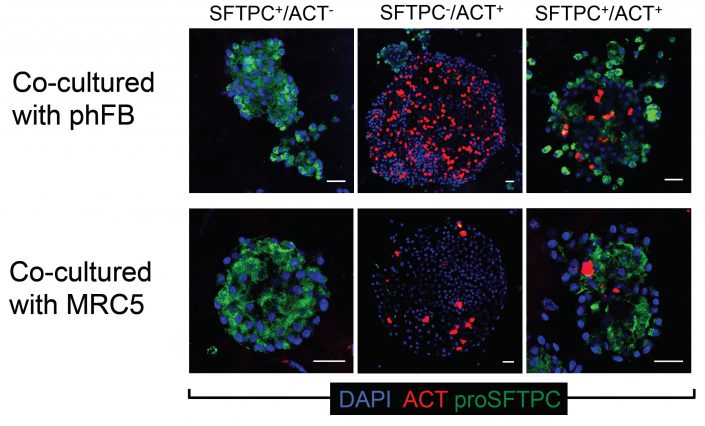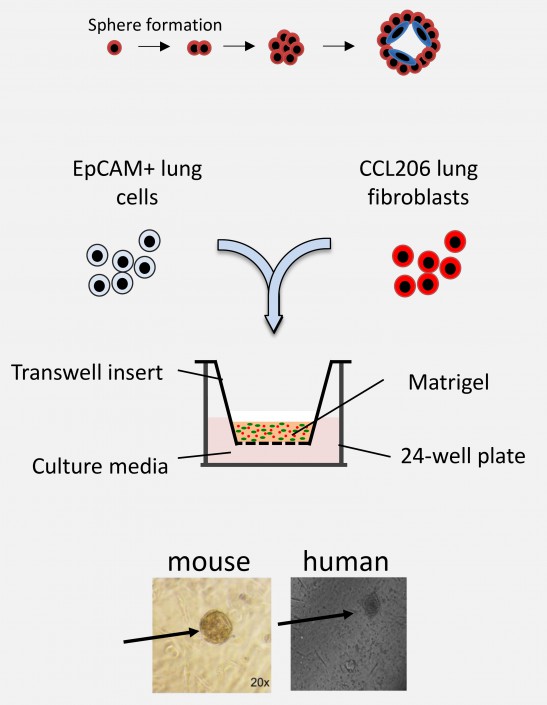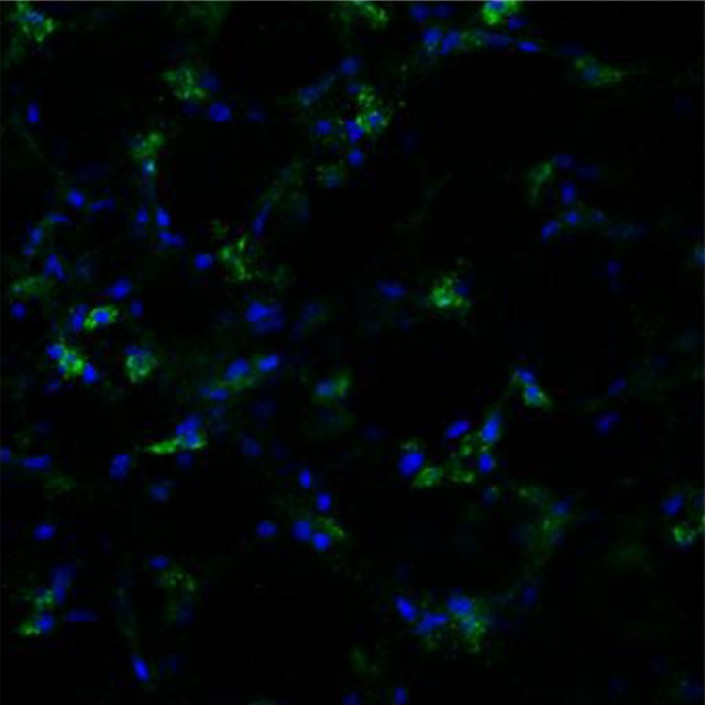Organoid models – 3D culture
Lung organoids provide a model system to study processes of repair/regeneration of lung epithelium. Defective alveolar repair as observed in COPD or lung fibrosis can be recapitulated using this model. Organoids of alveolar epithelial cells in co-culture with fibroblasts and/or endothelial cells can be used to evaluate efficacy of your investigational compounds on stem/progenitor cell functions in the lung.
Contact us today to see how we generate organoids and how your compound can have an effect on them.



